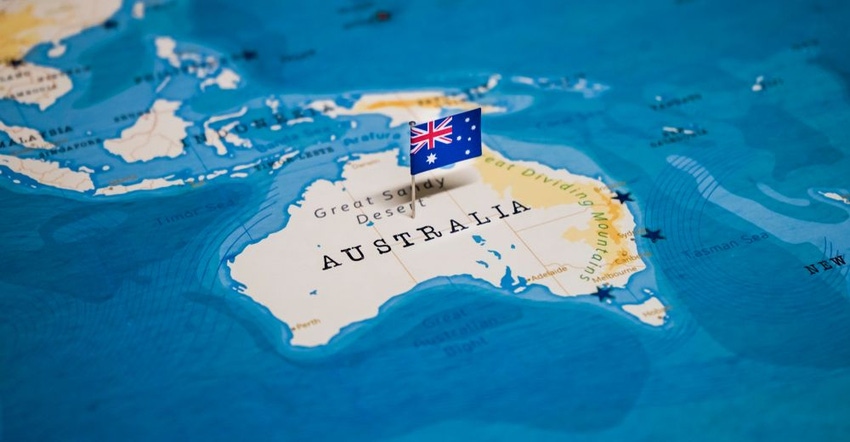The Australia Self-Storage Industry in 2023: An Insider’s View of Market Conditions, Performance and More
Despite facing a few challenges, the Australian self-storage sector continues to prosper. Get an insider’s view of market conditions, including facility performance, technology, industry consolidation and growth, and more.
February 2, 2023

Self-storage proved to be one of the most resilient industries in Australia during the coronavirus pandemic. The country went through considerable change that drove more people to seek the service. Business has been strong, yet with higher demand has come new challenges. Following is an overview of the local market and how it’s evolving in the wake of COVID-19.
Rates and Occupancy
Awareness of self-storage in Australia has increased, with most people having heard of the service. Residential moving remains our No. 1 driver of demand, but there’s also been an increase in e-commerce businesses that use storage units to house their inventory. As in other places, more people started working from home during the pandemic, too, which further increased occupancy and rates.
Though there appears to be no ceiling for self-storage rates yet, price can be an obstacle to rentals. There’s often a disconnect between what customers think self-storage costs and reality. Most people seek a low- or no-cost alternative before they’ll pay for storage; and rate increases are a common cause of move-outs.
The national unemployment rate was 3.3% as of November 2022, and inflation is at 7.3%. On top of that, home-rental vacancy in most capital cities is less than 2%, and housing pressure is unprecedented. Some people are living in caravan parks and even their cars! For these reasons, some self-storage operators have begun experiencing a softening in demand over the last few months. Discretionary spending has been significantly impacted by continual cost-of-living increases and monthly interest-rate hikes, which might just be starting to bite.
A Trend Toward Technology
The pandemic reset the way we think about self-storage operation in Australia. The need for contactless transactions had many operators scrambling for new technology to accommodate consumer demand. Unattended facilities are now on the rise, which makes sense, as some companies face labor shortages.
Swift Storage, for example, a new player in the Queensland market, has started building small, unmanned sites around Brisbane, using technology to deliver rentals from online sources. Lease-up has been positive.
StoreLocal, which operates 27 facilities in Australia, also shifted to cater to customers' needs. “Customers can move in 24/7, business users can use their work local spaces, and all customers have Bluetooth keyless access to their secure spaces,” says Mark Grieg, chief operating officer. “COVID has taught customers that you don’t need face-to-face contact to transact a move-in.”
Overall, Australian self-storage sites have become much more high-tech. Many new buildings are multi-level with ventilation control, passenger lifts, fire safety, and greater security that includes cloud-based gate access and video surveillance. These state-of-the-art sites lease up and achieve profitability faster than before and establish themselves in the community rapidly.
The High Price of Insurance
Insurance has become a challenge for many Australia self-storage companies. First, a sharp rise in weather events, natural disasters and related claims has driven up premiums for business insurance. Some operators have reported a five-fold increase! In addition, due to recent legislative changes, customer-goods insurance must now be sold by licenced operators, which means many facilities can’t offer it.
Industry Growth and Consolidation
During the pandemic, many Australians migrated to the suburbs as well as outlying communities and rural areas, causing an intense boom in housing development. This drives self-storage demand and, therefore, construction. With more than 90 projects either underway or planned at the time of this writing, industry growth continues, with the larger operators all planning expansions.
Still, there are roadblocks for new players in the field, such as lack of suitable land and financing, and rising construction costs. More than 40% of new facilities are three stories or more, reflecting the high cost of land.
Industry consolidation is as strong as ever, with large players always seeking acquisitions. This provides strong competition in terms of value for sellers. Capitalization rates have compressed from 7.3% to around 6.2%.
In large part, the sector is still privately owned. National Storage is the only public real estate investment trust, with 200-plus facilities. Kennards Self Storage is privately held, and Storage King is a mixture of franchise and company stores, some held by the Abacus Property Group. Together, these three operators total 40% of the Australia market.
Self-storage in Australia has entered an exciting phase. Rental rates and occupancies continue to be strong. Many of today’s operators use technology to offer the convenience of contactless rentals. Some costs are rising; but companies that are prepared to meet the needs of today’s consumers will continue to thrive.
Dallas Dogger is chairman of R6 Digital, a specialist marketing agency that supports Australia self-storage operators. He’s a member of the Self Storage Association of Australasia and a long-term industry investor. His company has received multiple service and innovation awards. To reach him, email [email protected].
You May Also Like





